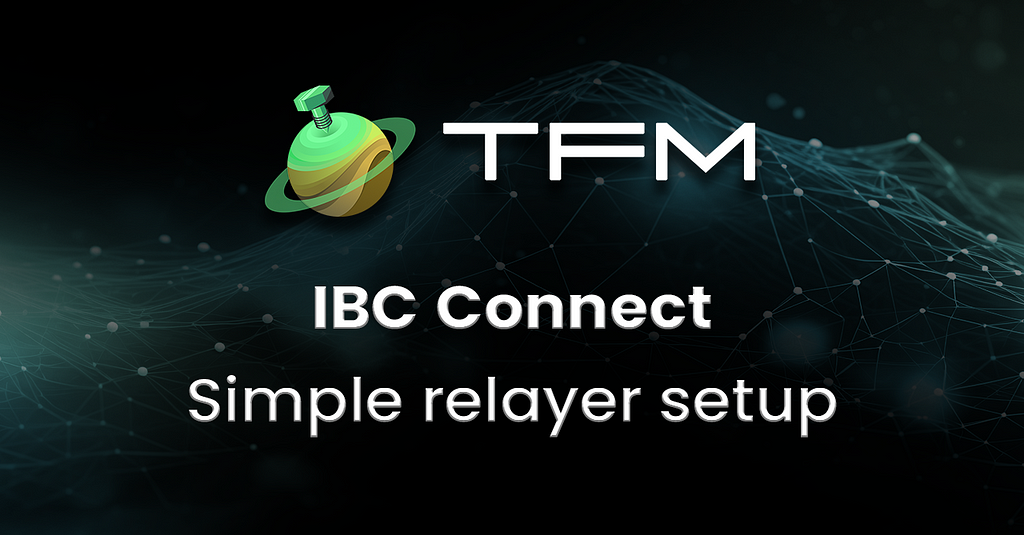Latest news about Bitcoin and all cryptocurrencies. Your daily crypto news habit.

IBC Connect: verify existing relayers and easily set up new relayer connections
The promise of IBC is that sovereign blockchains can speak the same language, building a web of interconnected chains and applications that can send any type of data. But how are these connections actually set up and maintained?
This is where IBC Connect from TFM comes in: a tool for interchain L1 teams to set up relayer connections between their appchain and as many other Cosmos SDK chains as required.
Through an intuitive user interface, appchain teams can request new connections as well as have TFM provide redundancy for existing connections. TFM have already set up multiple relayers for existing connections, helping to revert transactions that had got stuck.
Who is IBC Connect for?
IBC Connect is targeted at Cosmos SDK chain core teams. TFM aims to provide high quality relayer services, increasing connectivity throughout the interchain. Any Cosmos SDK chain can request TFM to set up new relayers or provide redundancy for existing connections.
What problem does IBC Connect solve?
Cosmos SDK chain teams often need to establish and manage relationships with a broad set of relayers or run relayers in-house. The resource constraints this process necessitates can become a drag on even the most robust team. TFM has launched IBC Connect as a way to improve the day-to-day experience of relayer management for appchain teams.
Since the launch of IBC Bridge, the precursor to IBC Swap & IBC Transfer, on March 17th 2023, TFM has learned that relayer reliability is fundamental to successful cross chain interactions. TFM manages the front end, back end and smart contracts. Managing the relayer connections as well makes practical sense by bringing more of the process under direct control of TFM — meaning they can have more of an influence on each step of the process, and users can experience improved cross-chain transaction flow.
How long until the relayers are active?
When a verified member of an interchain appchain submits a relayer request, TFM is able to set up the relayers within 1 hour of confirming receipt of the configuration file, generated on the IBC Connect dApp. A team member known to TFM should submit the configuration link via Telegram.
How to supercharge your appchain with IBC Connect
IBC Connect makes it easy to outsource IBC relayer connections, meaning appchains can focus on their core mission.
So how do you get started?
- Visit https://tfm.com/ibc-connect to explore relayer connections between appchains and set up new connections to bring the interchain closer together.
- Select the appropriate appchain
- On the left, there is a drop-down menu showing existing connections to other appchains
- On the right, appchain teams can select additional connections to other appchains as well as additional relayers for existing connections.
- Once the appropriate appchains have been selected, simply turn on the Enable TFM IBC-Connect toggle to generate a configuration link.
- Discussion with TFM, via Telegram, is necessary to confirm the authenticity of the request, and that’s it. Within an hour, all the requested relayer connections will be available.
With more relayers running, the interchain will continue to become more robust, helping to provide a more seamless experience for users.
TFM.com is your partner for a robust, seamless interchain. Get started with IBC Connect today.
Simplifying cross-chain UX: Meet TFM’s Widget, SDK and API for interchain app developers
IBC Connect: The easiest way for appchains to request managed relayer connections was originally published in Interchain Ecosystem Blog on Medium, where people are continuing the conversation by highlighting and responding to this story.
Disclaimer
The views and opinions expressed in this article are solely those of the authors and do not reflect the views of Bitcoin Insider. Every investment and trading move involves risk - this is especially true for cryptocurrencies given their volatility. We strongly advise our readers to conduct their own research when making a decision.